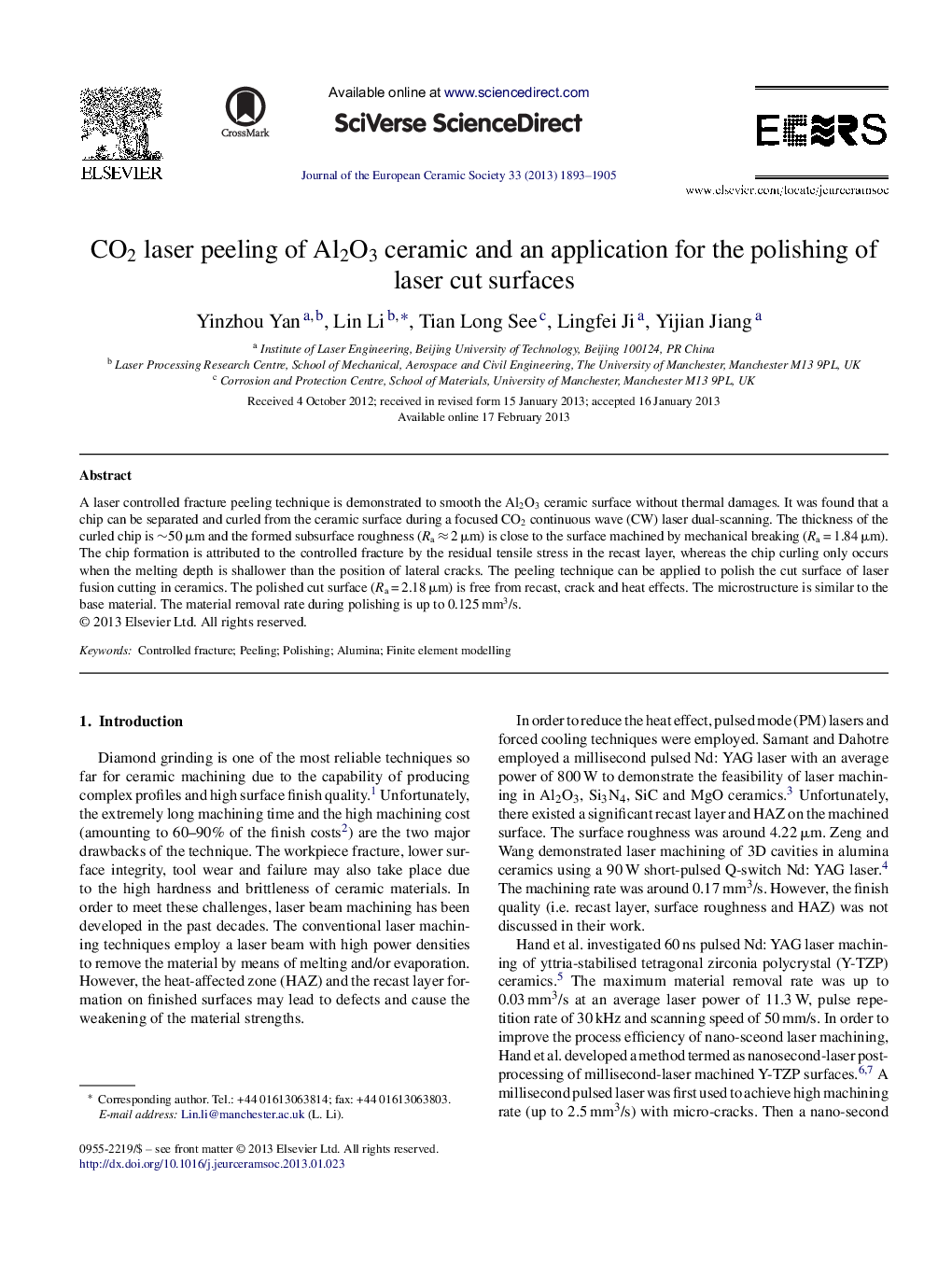| Article ID | Journal | Published Year | Pages | File Type |
|---|---|---|---|---|
| 1475420 | Journal of the European Ceramic Society | 2013 | 13 Pages |
A laser controlled fracture peeling technique is demonstrated to smooth the Al2O3 ceramic surface without thermal damages. It was found that a chip can be separated and curled from the ceramic surface during a focused CO2 continuous wave (CW) laser dual-scanning. The thickness of the curled chip is ∼50 μm and the formed subsurface roughness (Ra ≈ 2 μm) is close to the surface machined by mechanical breaking (Ra = 1.84 μm). The chip formation is attributed to the controlled fracture by the residual tensile stress in the recast layer, whereas the chip curling only occurs when the melting depth is shallower than the position of lateral cracks. The peeling technique can be applied to polish the cut surface of laser fusion cutting in ceramics. The polished cut surface (Ra = 2.18 μm) is free from recast, crack and heat effects. The microstructure is similar to the base material. The material removal rate during polishing is up to 0.125 mm3/s.
